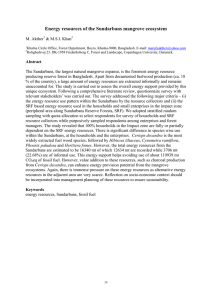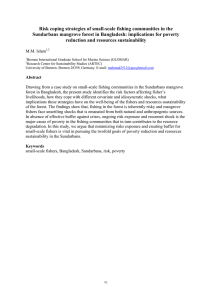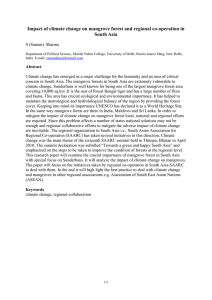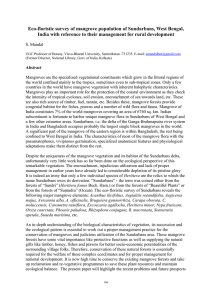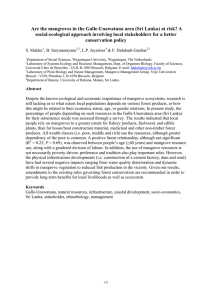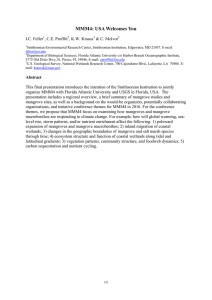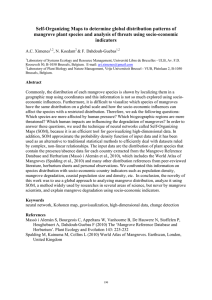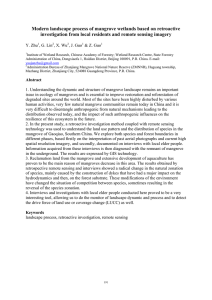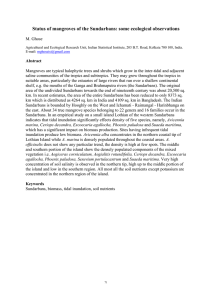Climate change and change in species composition in the Sundarbans
advertisement
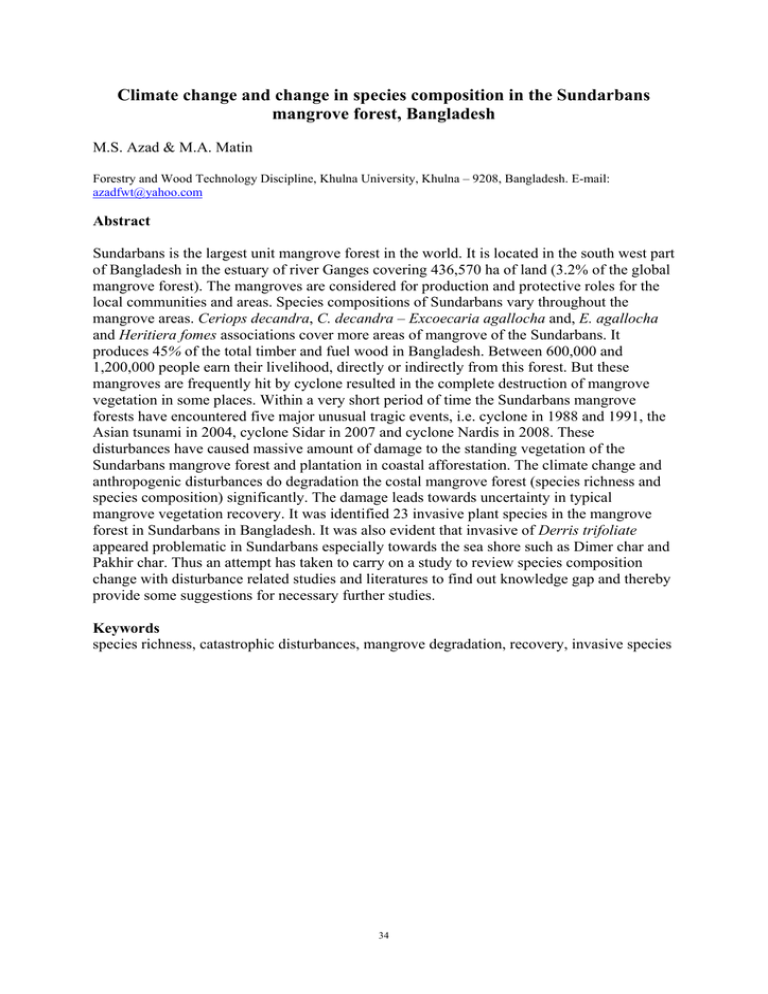
Climate change and change in species composition in the Sundarbans mangrove forest, Bangladesh M.S. Azad & M.A. Matin Forestry and Wood Technology Discipline, Khulna University, Khulna – 9208, Bangladesh. E-mail: azadfwt@yahoo.com Abstract Sundarbans is the largest unit mangrove forest in the world. It is located in the south west part of Bangladesh in the estuary of river Ganges covering 436,570 ha of land (3.2% of the global mangrove forest). The mangroves are considered for production and protective roles for the local communities and areas. Species compositions of Sundarbans vary throughout the mangrove areas. Ceriops decandra, C. decandra – Excoecaria agallocha and, E. agallocha and Heritiera fomes associations cover more areas of mangrove of the Sundarbans. It produces 45% of the total timber and fuel wood in Bangladesh. Between 600,000 and 1,200,000 people earn their livelihood, directly or indirectly from this forest. But these mangroves are frequently hit by cyclone resulted in the complete destruction of mangrove vegetation in some places. Within a very short period of time the Sundarbans mangrove forests have encountered five major unusual tragic events, i.e. cyclone in 1988 and 1991, the Asian tsunami in 2004, cyclone Sidar in 2007 and cyclone Nardis in 2008. These disturbances have caused massive amount of damage to the standing vegetation of the Sundarbans mangrove forest and plantation in coastal afforestation. The climate change and anthropogenic disturbances do degradation the costal mangrove forest (species richness and species composition) significantly. The damage leads towards uncertainty in typical mangrove vegetation recovery. It was identified 23 invasive plant species in the mangrove forest in Sundarbans in Bangladesh. It was also evident that invasive of Derris trifoliate appeared problematic in Sundarbans especially towards the sea shore such as Dimer char and Pakhir char. Thus an attempt has taken to carry on a study to review species composition change with disturbance related studies and literatures to find out knowledge gap and thereby provide some suggestions for necessary further studies. Keywords species richness, catastrophic disturbances, mangrove degradation, recovery, invasive species 34
